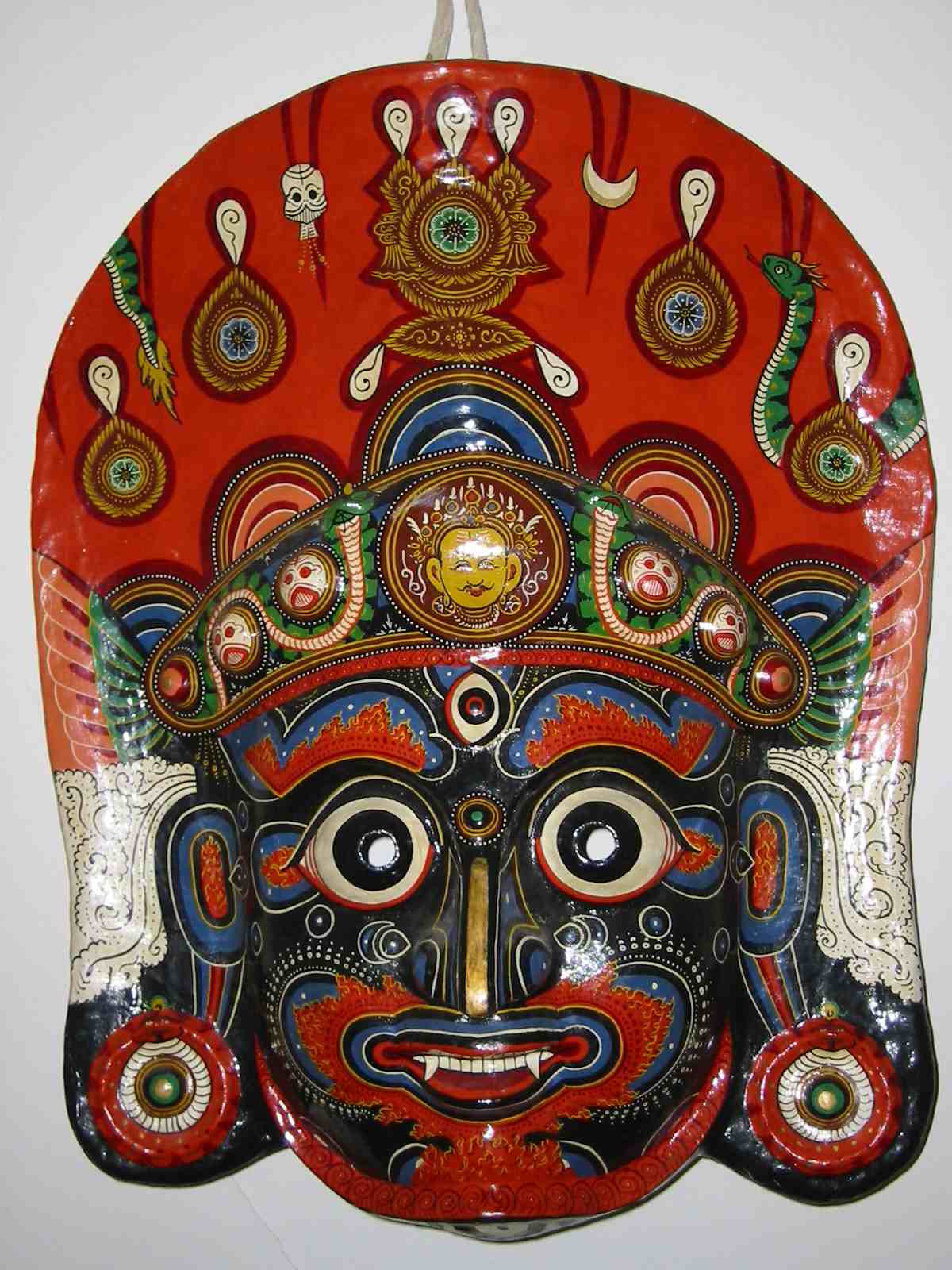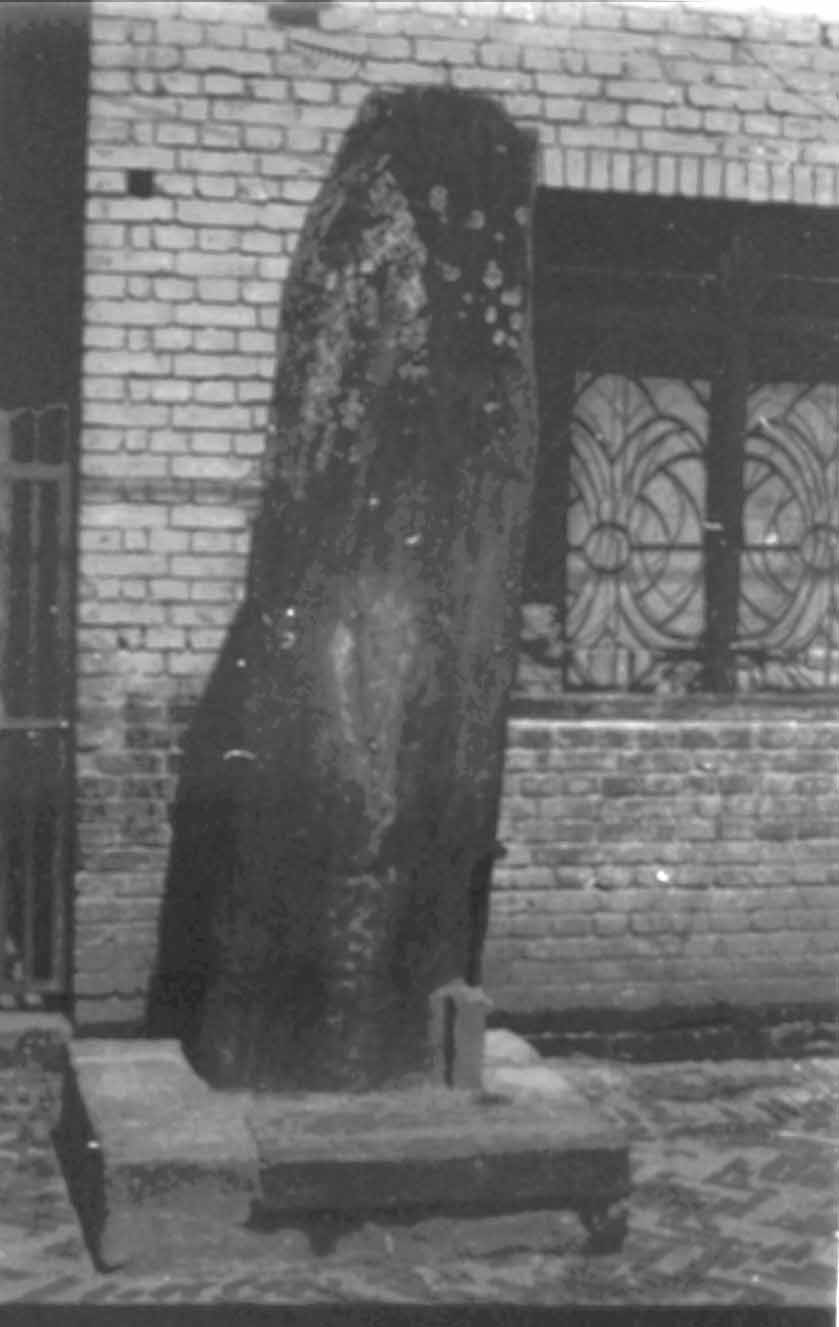One and Three Bhairavas:
The Hypocrisy of Iconographic Mediation
The artist-as-anthropologist, as a student of culture, has as his job to articulate a model of art, the purpose of which is to understand culture by making its implicit nature explicit. . . . [T]his is not simply circular because the agents are continually interacting and socio-historically located. It is a non-static, in-the-world model.
Joseph Kosuth, “The Artist as Anthropologist” (1991[1975])
Iconography is a hypocritical term. On the face of it, “iconography”
simply denotes the critical study of images
(Panofsky 1939; 1955). Yet, one must readily admit that iconography
stems from the fear of images (Mitchell 1987).
In fact, iconography can be defined as a strategy for writing over images.
But why fear images? Iconography’s zealotry—from idols
made in the likeness of God to fetishes made in the image of capital—stems
from the terror of the material.  Accordingly,
to proceed in an analysis of iconography, one must make explicit what
most religious discursive systems must by necessity leave implict religion
is never just “spirit.” Whether iconophobia or iconophilia,
whether iconoclastic or idolatry, what all religions have in common is
that they rely on matter for their dissemination. Even speech, the most
reified communication, relies on air and the physicality of the human
body.
Accordingly,
to proceed in an analysis of iconography, one must make explicit what
most religious discursive systems must by necessity leave implict religion
is never just “spirit.” Whether iconophobia or iconophilia,
whether iconoclastic or idolatry, what all religions have in common is
that they rely on matter for their dissemination. Even speech, the most
reified communication, relies on air and the physicality of the human
body.
Accordingly, to write about, rather than write over, religious images,
we need to return to the material. Stop and take a look at the god-image
of Bhairava, a fierce form of Shiva from the Nepalese city of Bhaktapur.
Bhairava is a stone-god (lohandyah)—a humanly constructed
concrete deity. Lohandyah literally translates from the Newar
as “stone (loha[n]) god (dya:)” and
is the local idiom for the pan–South Asian notion of murtis.
Murtis are concrete signs of gods and can be either aniconic
or iconic. They are the ritually consecrated images at the center of the
chief form of ![]() Hindu religious practice, puja (worship)
Hindu religious practice, puja (worship)
If you, like me, find yourself trained in and by “Western” academic discourses or if you have been trained in educational systems in other parts of the globe that gain distinction by modeling themselves on elite occidental pedagogy, it is difficult to face up to Bhairava’s materialty. This god-image challenges one’s understanding. When one gazes at his three fish-like eyes (two large, one small), sharp, fanged teeth, flaming orange-red lips, and elaborate, multicolored, snake-encrusted headdress, it is hard to escape one’s own historical, class, and geographic bias.
 A
look at Bhairava shows that there is no innocent “eye,” no
naïve viewing. What you see is not always what you get. Instead,
what we see depends on mediation. That is, because our descriptions of
religious images are culturally located, our “naïve”
descriptions are neither innocent nor objective. Rather, all social objects
are mediated by intervening socially grounded, culturally generated, and
historically particular mechanisms. Moreover, these intervening mechanisms
are not only by necessity material, but are marbled through and through
with power relations. For instance, the Bhairava image flickering on your
computer screen holds a different social meaning than an image of the
god in situ, and this digital image is not value-free but folds
back and transforms how the god-image itself is viewed.
A
look at Bhairava shows that there is no innocent “eye,” no
naïve viewing. What you see is not always what you get. Instead,
what we see depends on mediation. That is, because our descriptions of
religious images are culturally located, our “naïve”
descriptions are neither innocent nor objective. Rather, all social objects
are mediated by intervening socially grounded, culturally generated, and
historically particular mechanisms. Moreover, these intervening mechanisms
are not only by necessity material, but are marbled through and through
with power relations. For instance, the Bhairava image flickering on your
computer screen holds a different social meaning than an image of the
god in situ, and this digital image is not value-free but folds
back and transforms how the god-image itself is viewed.
![]() Introduction
Introduction

